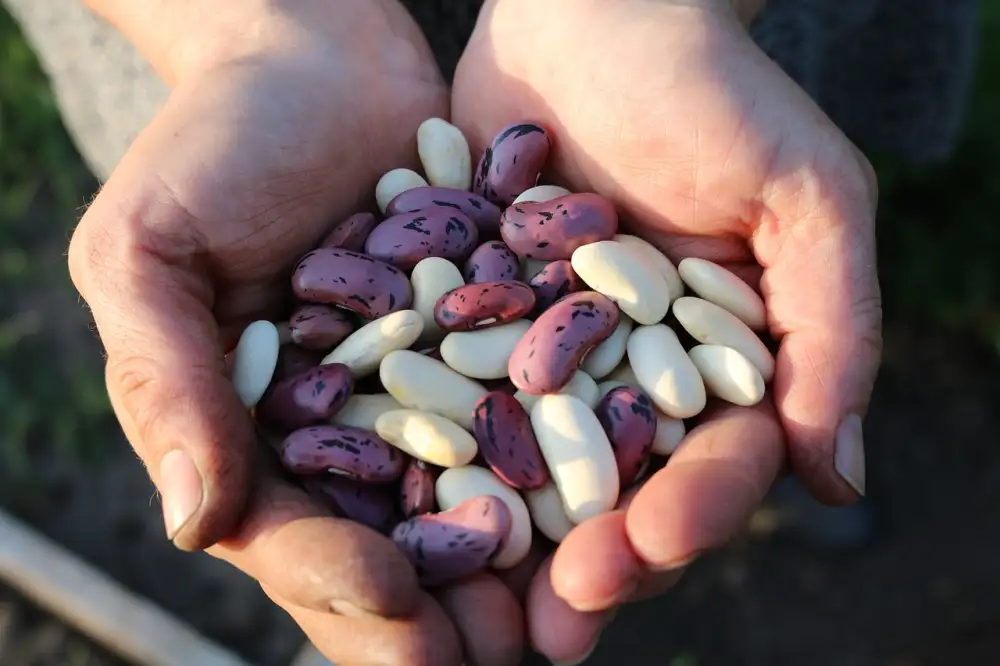Homegrown Delights: Unveiling the Secrets of Runner Beans for a Flavorful Feast

Runner beans, also known as Phaseolus coccineus, are a popular and versatile vegetable that have been enjoyed for centuries. Native to Central and South America, these vibrant green pods are a staple in many cuisines around the world. With their long, slender shape and bright red flowers, runner beans not only add visual appeal to any dish but also pack a flavorful punch. Whether you're a seasoned cook or just starting out in the kitchen, runner beans are sure to delight your taste buds and elevate your culinary creations.
Nutritional Benefits of Runner Beans
Runner beans, also known as Phaseolus coccineus, are not only delicious but also packed with numerous nutritional benefits. These vibrant green beans are a rich source of dietary fiber, providing a healthy dose of both soluble and insoluble fiber. Fiber aids in digestion, promotes bowel regularity, and helps to maintain a healthy weight. Runner beans are also low in calories and fat, making them an ideal addition to any balanced diet. Additionally, they are an excellent source of vitamins such as vitamin C and vitamin K, which boost the immune system and promote bone health respectively. Furthermore, runner beans contain essential minerals like iron and manganese that contribute to energy production and support overall well-being. Incorporating runner beans into your meals is a great way to enhance your nutrient intake while enjoying their delightful taste.
Culinary Uses of Runner Beans
Runner beans are incredibly versatile in the kitchen, offering a range of culinary possibilities. They can be enjoyed both cooked and raw, adding a delightful crunch to any dish.
In traditional cooking, runner beans are often boiled or steamed until tender and served as a side dish. They pair well with roasted meats, grilled fish, or even as an addition to stir-fries.
For a twist on classic recipes, try incorporating runner beans into salads for an added burst of color and texture. Their mild flavor complements a variety of ingredients such as tomatoes, feta cheese, and lemon vinaigrette.
Runner beans can also be used in soups and stews to add depth and substance. Simply chop them into bite-sized pieces and simmer them along with other vegetables for a hearty and nutritious meal.
If you're feeling adventurous, why not try pickling runner beans? The tangy flavor will make them the perfect accompaniment to sandwiches or charcuterie boards.
Lastly, don't forget about the versatility of runner bean seeds! When young and tender, they can be used as a substitute for green peas in dishes like risotto or pasta.
With their versatility and ability to enhance various dishes, runner beans are truly a culinary delight that should not be overlooked.
Growing Runner Beans in Your Home Garden
Runner beans are a versatile and easy-to-grow vegetable that can thrive in your home garden. To start, choose a sunny spot with well-drained soil. Prepare the soil by adding compost or organic matter to improve its fertility. Sow the seeds directly into the ground after the last frost, ensuring they are spaced about 8-10 inches apart.
Provide support for the runner beans to climb on, such as trellises or bamboo poles. As the plants grow, gently guide them towards the support structure to help them climb. Water regularly, keeping the soil moist but not waterlogged.
Runner beans are heavy feeders, so it's important to fertilize them every few weeks with a balanced organic fertilizer. Mulching around the plants will help retain moisture and suppress weeds.
Keep an eye out for pests like aphids or slugs, which can damage the plants. Use organic pest control methods if necessary, such as handpicking or spraying with neem oil.
Harvesting runner beans is simple - pick them when they are young and tender, about 6-8 inches long. Regular harvesting encourages more bean production. If you leave some pods on the plant to mature fully, you can save their seeds for future planting.
With a little care and attention, you can enjoy a bountiful harvest of runner beans right from your own backyard. So why not give it a try and experience the joy of growing your own delicious and nutritious vegetables?
Tips for Harvesting and Storing Runner Beans
1. Harvesting: Runner beans are best harvested when the pods are young, tender, and crisp. Pick them regularly to encourage continuous production. Look for firm pods that snap easily when bent.
2. Timing: Harvest in the morning when the plants are cool to retain maximum flavor and nutrients. Avoid harvesting during hot afternoons as the beans may become tough and lose their sweetness.
3. Technique: Hold the stem with one hand and gently pull the pod away from the plant with the other hand. Be careful not to damage the plant or nearby pods while harvesting.
4. Storage: Store freshly picked runner beans in a perforated plastic bag or airtight container in the refrigerator's vegetable compartment. They can stay fresh for up to a week if kept properly.
5. Freezing: If you have an abundance of runner beans, blanch them in boiling water for 2-3 minutes, then plunge them into ice-cold water to stop cooking. Drain well, pack into freezer bags, and freeze for future use.
6. Drying: To preserve runner beans for long-term storage, consider drying them. String them together using a needle and thread, hang them in a dry and well-ventilated area until completely dried out.
Remember, harvesting runner beans at their peak ensures optimal flavor and texture. Enjoy these delightful treasures straight from your garden or incorporate them into your favorite recipes!
Delicious Recipes featuring Runner Beans
Runner beans are not only nutritious but also incredibly versatile in the kitchen. Here are some mouthwatering recipes that showcase the delightful flavors of runner beans:
1. Runner Bean Salad: Toss blanched runner beans with cherry tomatoes, feta cheese, and a zesty lemon dressing for a refreshing summer salad.
2. Runner Bean Stir-Fry: Sauté runner beans with garlic, ginger, and soy sauce for a quick and flavorful side dish that pairs well with rice or noodles.
3. Runner Bean Soup: Simmer cooked runner beans with onions, carrots, and vegetable broth to create a hearty and comforting soup.
4. Runner Bean Curry: Cook runner beans in a fragrant blend of spices, coconut milk, and tomatoes for a delicious vegetarian curry that will satisfy any palate.
5. Runner Bean Pasta: Combine cooked runner beans with al dente pasta, olive oil, Parmesan cheese, and fresh herbs for a simple yet satisfying pasta dish.
These recipes highlight the versatility of runner beans and their ability to enhance any meal with their unique flavor and texture. So go ahead and let your culinary creativity soar by incorporating these delightful legumes into your cooking repertoire!
Runner Beans: A Sustainable and Eco-Friendly Food Option
Runner beans are not only delicious and nutritious, but they also offer a sustainable and eco-friendly food option. These legumes have a low carbon footprint compared to other protein sources, as they require less water and emit fewer greenhouse gases during cultivation. Additionally, runner beans can be grown organically without the use of harmful pesticides or synthetic fertilizers, making them an environmentally friendly choice for conscientious consumers. By incorporating runner beans into your diet, you can contribute to a greener and more sustainable future for our planet.
In conclusion, runner beans are a true gem in the world of food treasures. With their rich nutritional profile and culinary versatility, they offer a delightful addition to any meal. Whether you choose to grow them in your home garden or purchase them from local markets, incorporating runner beans into your diet is a fantastic way to enhance your health and enjoy delicious flavors.
From soups and salads to stir-fries and side dishes, there are countless ways to savor the unique taste and texture of runner beans. Their ability to absorb flavors makes them an excellent companion for various herbs, spices, and sauces. So why not experiment with these vibrant legumes and discover new culinary delights?
What's more, growing runner beans at home is not only rewarding but also sustainable and eco-friendly. By reducing reliance on commercially grown produce, you can contribute to a greener planet while enjoying fresh, pesticide-free beans straight from your garden.
So go ahead and embrace the versatility of runner beans in your home. Get creative with recipes, explore different cooking methods, and share the joy of this humble yet extraordinary vegetable with your loved ones. Let the secrets of runner beans unfold on your plate as you indulge in their flavorful feast.
Published: 13. 12. 2023
Category: Home



